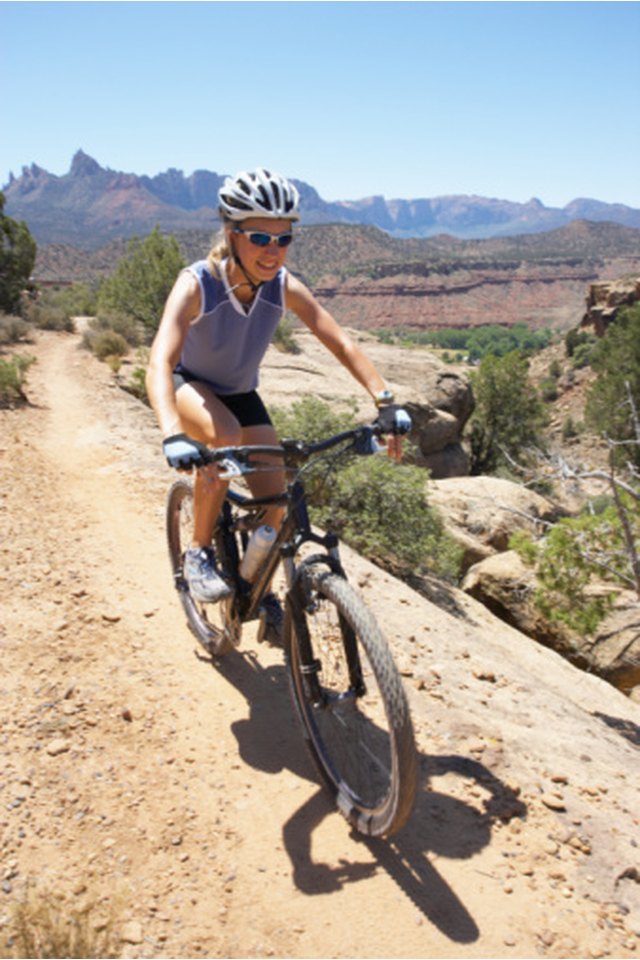The Correct Posture for Mountain Biking

Observing proper posture is essential to the comfort and enjoyment of all bicycle riding, including mountain biking. Though the posture required for mountain bikes is very different from the riding posture of road bikes, various rules of fitting and adjustment remain standard for promoting proper sitting position and comfort.
The Nearly Upright Position
Unlike racing road bikes, which require completely forward-bending postures, you sit nearly upright on mountain bikes with just a slight forward lean under most circumstances. Support the posture with arms slightly bent and gripping the ends of a flat steering bar, as opposed to the curved handlebars of road bikes.
Significance of Proper Adjustment and Fit
To promote the proper posture and avoid discomfort and injuries, seek the proper fit when buying a mountain bike and adjust it properly once you bring it home. Some cycling websites suggest straddling the frame of the bike and looking for two inches of clearance between the crossbar and your crotch for a proper fit. However, Beginner's Guide recommends seeking help from the trained sales staff of a bike or sporting goods retailer. Proper seat and handlebar adjustment also is paramount to promoting the right posture on mountain bikes. BicycleSource.com recommends adjusting your seat, also called a saddle, so it sits level on the bike frame. Too much tilt, and your riding posture suffers. Adjust your seat height so your knees are nearly straight, with just a slight bend, when the bike pedals reach their lowest point of the peddling rotation.
Injuries/Discomfort
Improper mountain bike posture and adjustment cause lower back pain, knee pain caused by overextension or underextension and neck pain. ABC-Of-Mountain Biking recommends relaxing your shoulders to reduce strain on your neck during riding. The Message Therapy Journal's Ben E. Benjamin notes that although mountain bike posture is somewhat upright, it places strain on your muscles, tendons and joints. Mountain biking on rough terrain leaves you particularly open to injury, such as wrist sprains. So have proper conditioning before navigating off-road and rustic trails.
Importance of Stretching/Strengthening
Neck stretches before riding and neck messages after a ride help you avoid injuries or discomfort arising from the slightly bent mountain-biking posture on rough terrain, according to ABC-Of-Mountain Biking. Especially if you're a beginning rider, lower back stretches and attempting shorter distances until you build riding strength prevents lower back injuries, according to the site. Abdominal exercises such as sit-ups strengthen the muscles supporting your back, making injury from riding less likely.
Understanding the Limitations
Though many riders find mountain bikes more comfortable than road bikes because of the more upright sitting position, mountain bikes have limitations. Though the thicker tires and substantial frames of mountain bikes make them excellent navigators of rough terrain, they're not the best option for speed and long-distance riding, according to Bicycle Touring Guide. Riding across flat open terrain, especially in high winds, often exhausts riders as their bodies catch more wind than on bent-posture road bikes, according to the guide. If you bend forward to gain more aerodynamics on a mountain bike, the posture becomes too uncomfortable to hold for long periods.
Writer Bio
Marc Chase is a veteran investigative newspaper reporter and editor of 12 years. Specializing in computer-assisted reporting, he holds a Bachelor of Science in journalism from Southern Illinois University and a Master of Arts in public affairs reporting from the University of Illinois.
